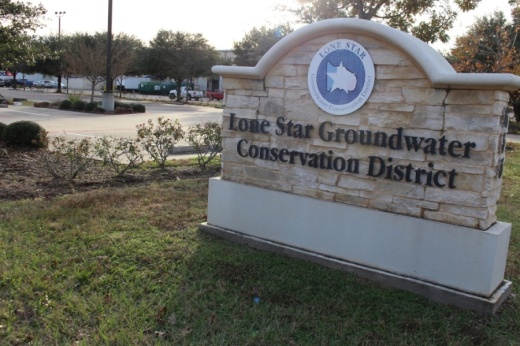According to the LSGCD, the original restriction was based off faulty methodology that did not consider the actual hydrology of aquifers. However, some officials are concerned that without the cap, Montgomery County could pump an excessive amount of groundwater, which could deplete aquifers at a faster rate.
“The new rules will adversely impact much of Montgomery County,” said Jim Stinson, the general manager of The Woodlands Water Agency, which oversees and manages 11 municipal utility districts in The Woodlands. “Data clearly shows that reducing groundwater withdrawal in Montgomery County to about 65,000 acre-feet per year stabilized aquifer levels, minimizes fault movement and substantially reduces subsidence in our region.”
Background
In 2010, the city of Conroe and a number of other large-volume water users countywide, including The Woodlands, entered into an agreement with the San Jacinto River Authority to reduce their groundwater usage to 70% of their 2009 demand by January 2016.
However, the city of Conroe and other stakeholders filed a lawsuit challenging the groundwater use regulations in 2015. After legal proceedings, the district revoked its restrictions in 2017, authorizing an additional 30% increase in groundwater production.
Aspart of the Groundwater Management Area 14, the district is currently considering a new desired future condition, or DFC, for the Gulf Coast Aquifer System. A DFC is a long-term goal for the aquifers, such as to maintain aquifer levels for the next 50 years.
The proposed DFC will establish a new volume of available groundwater instead of the current 64,000 acre feet per year. The proposed DFC will be voted on by groundwater conservation districts in Groundwater Management Area 14. A final DFC will be adopted in January 2022.
Immediate and long-term effects
The immediate effect of the LSGCD’s new rules is entities are no longer restricted to the 70% cap. For example, The Woodlands, which draws from the Evangeline and Jasper aquifers, was using 35% groundwater and 65% surface water to comply with the original LSGCD regulations, Stinson said.
“Now that LSGCD has adopted rules with no limits on groundwater and there are no regulatory incentives to use surface water, it is likely that all entities currently using surface water will migrate to more groundwater usage,” Stinson said. The permitted groundwater use for 2021 from The Woodlands is about 3 billion gallons, Stinson said.
Stinson said it is not clear whether the changes will affect water bills.
Mike Turco, the general manager of the Houston-Galveston Subsidence District, said increased groundwater usage may lead to subsidence, or gradual sinking of the earth due to excessive pumping.
Data from the subsidence district shows land-surface elevation across Montgomery County has been trending downward, with some records dating back to 2005. In 2015, the subsidence rate stabilized somewhat when surface water was introduced as a source of water, Turco said. The total subsidence in some areas of Montgomery County was about 9 centimeters from 2015 to 2020.
Kelly Schafler contributed to this report.
Editor's note: This story has been edited to clarify and correct several points since it ran in print in The Woodlands edition on Jan. 19.






